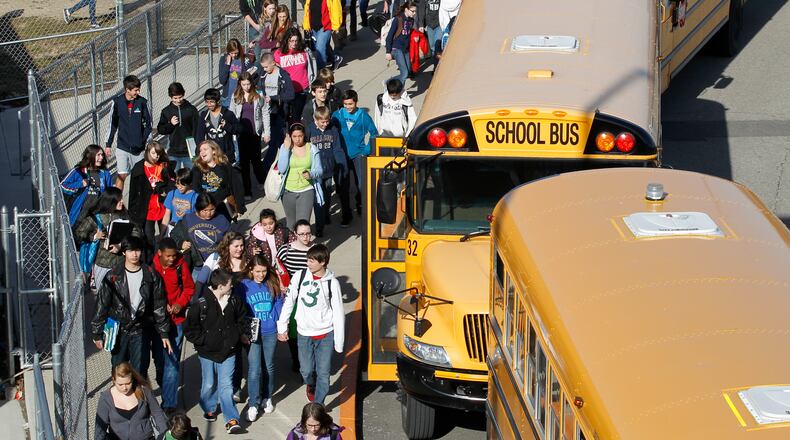FOLLOWING OUR SCHOOLS
The Dayton Daily News is committed to following what’s going on in your schools. This story is part of our in depth coverage of the Beavercreek City School District’s financial situation.
Without any changes, the Beavercreek City School District would start the 2015 fiscal year with $5.2 million in the bank, not enough to open the schools for 2015/16 school year.
“That is not enough to pay the bills,” Treasurer Stephen Maag said Thursday.
Maag presented the district’s 5-year forecast to the school board during Thursday’s board meeting. According to the forecast, the district would start the 2014 fiscal year with $12.8 million, which is below the board’s longtime minimum for cash reserves — enough cash to run the district for 60 days, roughly $14 million. The $5.2 million in 2015 would cover just 25 days.
The carryover would fall to $5.8 million in the red in 2016 and $22.4 million in the red in 2017.
“The last year we ran in the black was 2009. We’ve been pulling from reserves since 2010 even with $6 million in personnel cuts,” board member Mick Lundy said.
The board has placed a 6.7-mill. 5-year emergency operating levy on the August ballot. “It is critical to pass a levy this year, so we can begin collecting on it next year,” Maag said. The levy would collect $10.9 million annually if approved by voters.
District voters have not approved new operating money in 10 years.
Maag said he assumed a 1 percent growth in real estate tax receipts — roughly two-thirds of the district’s funding — during the five years. He did not factor in any change in state funding during the same period.
District voters have defeated four consecutive operating levies. The most recent was last November — a 6.7-mill emergency operating levy to pay for the operations of its two new school buildings and provide funds for the district’s ongoing operations. The levy narrowly was defeated 50.3 percent to 49.6 percent
Voters approved an $84 million bond request in 2008 for construction of two new school buildings and renovation of eight existing schools. That bond money only can be used for construction and not any operating costs.
About the Author
